Caligula › Canaan › Battle of Teutoburg Forest » Origins and History
Articles and Definitions › Contents
- Caligula › Who Was
- Canaan › Origins
- Battle of Teutoburg Forest › Origins
Ancient civilizations › Historical places, and their characters
Caligula › Who Was
Definition and Origins
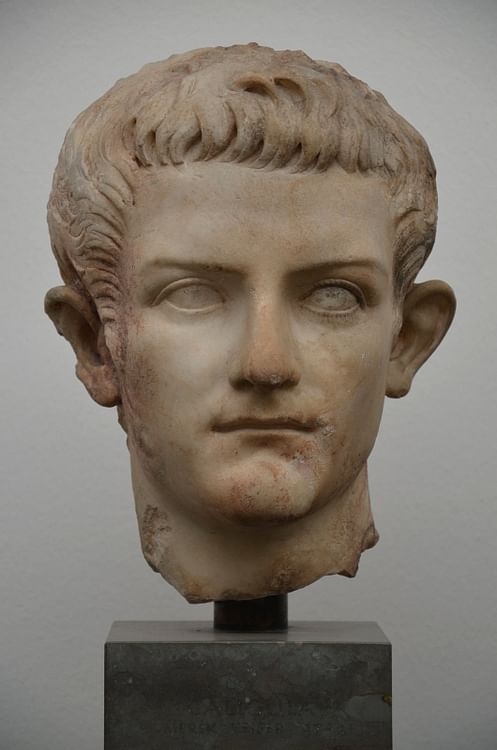
Among the great emperors of the Roman Empire stand Augustus and Marcus Aurelius. At the other end of the spectrum is the Emperor Caligula who the historian Suetonius simply calls a monster. In his The Twelve Caesars he further added:
It is difficult to say whether weakness of understanding or corruption of morals were more conspicuous in the character of Caligula. He seems to have discovered from his earliest years an innate depravity of mind, which was undoubtedly much increased by defect of education.
EARLY LIFE
Born Gaius Julius Caesar in 12 CE, Caligula was the son of Germanicus (hero of the German campaign) and Agrippina, granddaughter of the Emperor Augustus (her mother was his daughter Julia). The name “Caligula” is actually a nickname meaning “little boots,” derived from the miniature uniform he wore as a child while on campaign with his father. The precocious youth served as the company's mascot. Shortly after the death of his family, Caligula moved to the isle of Capri where he was raised by the Roman Emperor Tiberius as what some historians consider a prisoner. Although Germanicus's death is suspicious, Tiberius is thought to have been instrumental in the death of Caligula's mother and brothers.
CALIGULA'S RESPONSE TO HIS CRITICS WAS: “LET THEM HATE ME, SO LONG AS THEY FEAR ME.”
Since Caligula and his sisters were considered to be of no immediate threat, they were allowed to live. While on the island, Caligula witnessed the brutality and savage behaviour that was Tiberius. On Capri he was surrounded by corruption and excess. Suetonius said:
… even in those days Caligula could not control his natural brutality. He loved watching tortures and executions;and, disguised in wig and robe, abandoned himself nightly to the pleasures of feasting and scandalous living.
CALIGULA BECOMES EMPEROR
Upon the death of Tiberius on 17 March 37 CE, Caligula became the co-emperor of the Roman Empire with Tiberius' son Gemellus. Caligula, however, soon came to be the lone ruler with the death of Gemellus. (Caligula is suspected of having a hand in the death of his co-emperor.) Since Tiberius had never been a popular emperor, the citizens of Rome welcomed the young emperor, and Caligula soon earned this admiration: He ended the treason trials instituted by Tiberius, recalled exiles, and gave long over-due bonuses to the Praetorian Guard. He completed a number of building projects started by the former emperor, rebuilt decaying temples, built a lighthouse at Boulogne, began work on new aqueducts and even built a new amphitheatre In Pompeii. There were numerous gladiatorial games and chariot races to entertain the people.
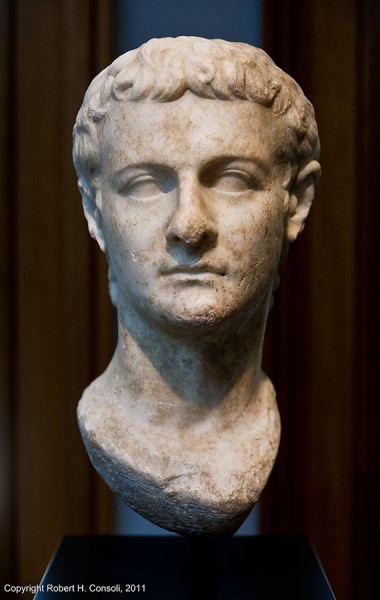
Caligula
Within six months after assuming power, however, everything changed: After coming close to death (historians are divided on the cause - a possible breakdown or epilepsy), Caligula became a different person. He was more paranoid, and the Caligula some had seen on Capri re-emerged. After having reduced taxes earlier in his reign, he raised them in order to pay for his excesses. He instituted a series of purges against suspected enemies, including even his first wife. He brought back the treason trials of Tiberius. He condemned others in order to confiscate their property. Suetonius adds that he became more sadistic and “showed the keenest interest in witnessing the suffering and torment of those condemned being tortured.” In reference to a series of gladitorial games attended by Caligula, historian Cassius Dio said:
It was not the large number of those who perished that was so serious, though that was serious enough, but his excessive delight in their death and this insatiable desire for the sight of blood.
His extreme behaviour knew no limits, living a life some historians label as perverse and insane. He gave his beloved horse, Incitatus, jewel-encrusted collars and even threatened to grant him the title of consul. He built a two-and-a-half-mile pontoon bridge across the Bay at Baiae. And his response to his critics: “Let them hate me, so long as they fear me.”
Although he annexed Mauritania, he led meaningless campaigns in Germany only to earn some sense of military glory. During one of his campaigns in the north, a supposed invasion of Britain, he ordered his soldiers to collect sea shells. Historian Dio wrote, "Next he took his seat on a lofty platform and gave the soldiers the signal as if for battle, bidding the trumpeters urge them on, then of a sudden he ordered them to gather up the shells," Caligula took the shells back to Rome where he exhibited his booty.
He also waged a constant war with the Jewish population in Judah who were at odds with the Greeks. When the Jews failed to give him the homage he believed he deserved as a living deity, Caligula threatened to have a statue of himself erected in the Temple of Jerusalem but luckily was convinced otherwise in order to prevent further rioting. Historian Philo who lived the same time as Caligula (sometimes called Philo the Jew or Philo of Alexandria ) said that Caligula
regarded the Jews with most especial suspicion as if they were the only persons who cherished wishes opposed to him....(and) believe(d) there was but one God, their Father and the creator of the world.
Finally, after only four years as emperor, in January of 41 CE, Caligula was murdered by members of the Praetorian Guard led by Cassius Chaerea, who had been a constant target for Caligula's insults. His wife, Caesonia, and daughter were murdered as well, and to add insult to Caligula's memory, the man he had ridiculed for years was named his successor: Found cowering behind a curtain, fearing for his own life, and the only surviving adult male, Claudius, was named the new emperor of the Roman Empire.
It should be noted that some present-day historians are looking at Emperor Caligula with a new set of eyes. as we have seen, many of the contemporary sources - Suetonius is the most famous - viewed him as a depraved, self-absorbed ruler.Unfortunately, this bias has trickled down to present day authors, and, therefore, this older view of him remains. The reason for this bias is simple. Many of those early authors who wrote on Caligula were commissioned by later emperors who viewed the fallen emperor in a more negative light. While much of what was written about him is, in part, true, a newer depiction of Caligula might inquire about the causes of his dramatic change in personality and concentrate on many of the more positive aspects - the accomplishments - of his brief reign.
Canaan › Origins
Definition and Origins
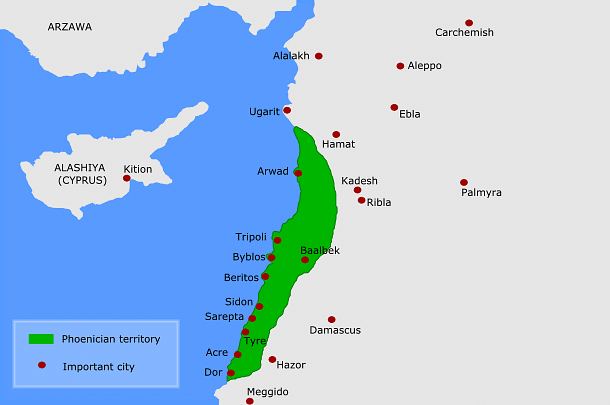
Canaan was the name of a large and prosperous country (at times independent, at others a tributary to Egypt ) which corresponds roughly to present-day Lebanon, Syria, Jordan and Israel and was also known as Phoenicia. The origin of the name `Canaan' for the land comes from various ancient texts (among them the Hebrew Bible ) and there is no scholarly consensus on precisely where the name originated nor what it was intended to convey about the land. According to the Biblethe land was named after a man called Canaan, the grandson of Noah ( Genesis 10). Other theories cite `Canaan' as derived from the Hurrian language for `purple' and, as the Greeks knew the Canaanites as ` Phoenicians ' ( Greek for `purple' as the Phoenicians worked, primarily at the city of Tyre, in purple dye and so were called by the Greeks `purple people') this explanation is the most probable but, by no means, provable.
RELIGION & COMMERCE
The indigenous people of the land of Canaan worshiped many gods but, chief among them, the goddess Astarte and her consort Baal (considered vegetative/fertility deities who then took on more impressive attributes earlier ascribed to Sumerian gods such as Enlil ). Women could and did serve as Priestesses, could own land, enter into contracts and initiate divorce. By the second millennium BCE Byblos was the great exporter of cedar from Mount Lebannon and of papyrus (the name of the Bible comes from the Greek word Byblos for `Book, a reference to the city which supplied the surrounding nations, especially Egypt, with the papyrus to write on) and Tyre was a great industrial centre producing highly sought after purple garments made from the purple dye of Murex shells and the city of Sidon, also engaged in similar trade, was a great centre of learning. The Canaanites (Phoenicians) developed the first alphabetic writing system, mathematics, were renowned in the ancient world for their skill in ship building and navigating the seas and have also been cited as the early source or inspiration for the mythology of the Greek gods. The Canaanites sailed across the sea as far away as Spain and as far north as modern-day Cornwall, England, and their cities grew, owing to their prosperous trade, into places of splendour and wealth.
MOSES LED HIS PEOPLE FROM EGYPT TOWARD THE 'PROMISED LAND' OF CANAAN.
THE 'PROMISED LAND'
According to the biblical narrative in the Book of Exodus, the patriarch Moses lead his people, the Israelites, out of the bondage of slavery in Egypt and toward the `promised land' of Canaan where their god had promised them they would live in peace in a “land flowing with milk and honey.” The Book of Joshua, following the Exodus narrative, tells of the campaigns of the Israelite General Joshua in the land of Canaan subduing the populace with the help, and by command of, his god (most famously destroying the city of Jericho, which was the oldest city in the region with the greatest cultural legacy). Scholars date the invasion of the Israelites to about 1250 BCE and archaeological excavations in the region have confirmed some kind of disturbance in the region between 1250 and 1200 BCE which resulted in the destruction of Canaanite towns and cities. These ruins, however, do not always match the descriptions given in the Book of Joshua.
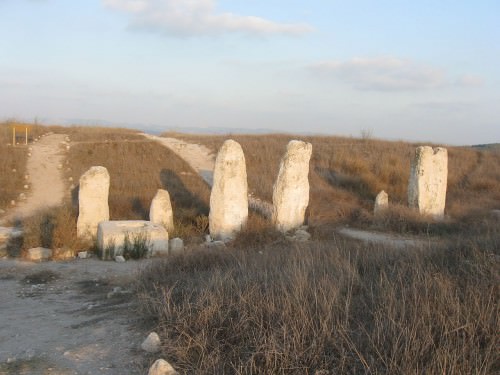
The High Place at Gezer
Even so, the destruction of the cities and the absence of further development of the culture, indicate that some catastrophic event, or series of events, impacted the people of Canaan significantly. The time period in which General Joshua allegedly conquered the land of Canaan corresponds with a period of general upheaval in the ancient world from the destruction of Troyby the Achaeans to the fall of the Hittite Empire, the ruin of the great city of Ugarit and the beginning of the harassment of coastal towns by the mysterious Sea Peoples. Whatever the cause, by 1100 BCE Canaan was no more than a narrow territory north of the Kingdom of Israel located by the sea in present-day Lebanon.
Battle of Teutoburg Forest › Origins
Ancient Civilizations
At the Battle of Teutoburg Forest (aka Battle of Varus), c. 9 CE, a combined force of Germans annihilated a Roman armyconsisting of three legions including three squadrons of cavalry and six cohorts of auxiliary troops. As some soldiers must have been left behind to defend summer camps, the army probably held 10,000 to 15,000 men or roughly 8 to10 % of the total Roman army. The sources do not mention the size of the German army. Based on the size of the catchment area, and the fact that Arminius, leader of the German forces, was not able to recruit all chieftains, it is likely that the Germans were heavily outnumbered, perhaps 1:2.
Seven years after the battle, the Romans sent Germanicus to revenge their fallen comrades by devastating the countryside.Nevertheless, the battle had a decisive impact in the long run; the Romans never consolidated the hold of Germania Interior, the land east of the Rhine. Instead, the Roman frontier (limes) along the Rhine was consolidated. Later, after the 16th century CE, the battle fed the imagination of countless military commanders and their belief in what a decisive battle might ensure in terms of glory and political gains

Arminius & the Battle of Teutoburg Forest
PROLOGUE
Every youngster, who has ever studied Latin, has been met with the task of reading one of the great military historical works, The Gallic Wars by Julius Caesar. As such they have also read how Caesar c. 55 BCE built two bridges across the river Rhine and led his army across in order to confront the Germans on their home turf for the first time. In the next 60 years, this led to widespread warfare in the northwestern part of present Germany in the region between the rivers Rhine and Weser, with skirmishes penetrating as far as the river Elbe. Exactly how far into the interior (Germania Interior) the Romans succeeded in pressing forward is debated. The remains, however, of several Roman encampments, recorded archaeologically as far inland as the Roman fort at Barkhausen in Porta Westfalica, indicate how far the Romans reached under the leadership of Tiberius 9-7 BCE. By all accounts, the Romans afterwards settled down to colonise and Romanise the region.
WE KNOW FROM THE ARCHAEOLOGICAL EXCAVATIONS AT KALKRIESE THAT THE ATTACK HAD BEEN CAREFULLY PREPARED DURING THE SUMMER.
COMMANDERS
For this purpose, Publius Quinctilius Varus was appointed governor of Germania in 7 CE. At his command were three legions. In September 9 CE Varus broke up from his summer camp in order to march his army to winter in either Xanten or Mainz. History later tells us that Varus received intelligence from Arminius that a rebellion was cooking to the east of the Rhine.Arminius was son of a prominent Germanic chieftain, but had spent his childhood in Rome as a hostage. Here, he had received a military education as well as obtained Roman citizenship. In this capacity, he had obtained the rank of equestrian, as well as a post as squadron leader in Varus' army. Afterwards it became apparent that, Arminius – while serving as liaison between the Romans and the Germans - had plotted against the Romans, recruiting support and soldiers from a number of German chieftains.
We know from the archaeological excavations at Kalkriese that the attack had been carefully prepared during the summer.Thus, Arminius was not leading a random rebellion, but an ingeniously planned attack on the Roman army stationed along the Lower Rhine. Come September, Roman historians tell us that when Arminius had fed Varus the false information, Varus was lured to make a detour into Arminius' preselected and prepared battlefield. Historians also tell us that Segestes, the Roman father-in-law of Arminius, forewarned Varus; unfortunately, the Roman commander disregarded this and marched his legions towards total annihilation.

Coin inscribed VAR(us)
BATTLEFIELD LOCATION
Although the story of the battle of Teutoburg was known since Antiquity, it was not accorded special significance until 1470 CE when the description by Tacitus was discovered and printed in Venice for the first time. However, the exact location of the battlefield continued to be an enigma for more than 500 years, until the amateur archaeologist, major Tony Clunn, after a successful day with his metal detector, hooked up with the leading archaeologist in Osnabrück, Wolfgang Schlüter. Based on the writing of the 19th-century CE historian Theodor Mommsen they began systematically to investigate an area north of the Wiehen Hills (Wiehengebirge) in Lower Saxony, Germany; more precisely at Kalkriese. Formerly, the area had been considered an archaeological desert because peasants had used a special technique when farming the land. In order to fertilise their fields, they would cut bricks of peat or grass to use as bedding for cattle in winter. Come spring, this manure would be spread out on the fields, which would be intensively worked as in-fields, creating layer upon layer of so-called podzollor plaggen soil. This meant that the Roman landscape was covered with sometimes more than a meter to a meter and a half of agricultural soil. Until the introduction of deep ploughing, farmers might recover the odd coin, but no more. After WW2 this changed and a better sense of the Iron Age landscape gradually emerged.
Today, we know that the landscape was indeed covered with settlements, hamlets and small villages. At the same time, more and more coins were recovered, puzzling archaeologists and historians. How come, all these coins were found and, moreover, were datable to the period of Varus' governorship? When metal-detectors also discovered lead missiles, this led to the first archaeological excavations in 1989 CE. Today, very few archaeologists or historians doubt that the Battle of the Teutoburger forest took place at a narrow stretch of land between the moors up north and the hilly and forested countryside to the south.
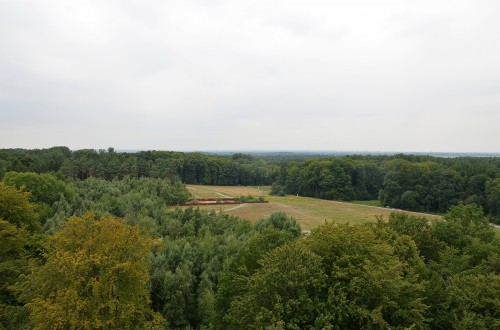
Teutoburg Forest
TACTICS
It is generally believed that Varus was leading his army west. This is based on the distribution of archaeological finds, which tells a story of a slowly disintegrating army moving in this direction. When he reached the Wiehen Hills, he was obliged to skirt the hilly ridge to the south-west and the damp and intractable moors to the north. Looking at a map it is easy to see how the landscape literally pressed him into stretching out the line of march. Archaeology has shown that the attack took place along a narrow path covering approximately 15 - 20 km. and took the form of a battle in defile. It is generally believed that German warriors, hidden in the forest, initially attacked the rear end and the flanks of the Roman army from above by pelting the men with lances and lead missiles. These tactics basically hindered the Romans in taking up their classic battle formations. Also, it is probable that the seasoned soldiers became intermingled with the fleeing auxiliary troops making the Germans' attack strategy gradually easier. Finally, it may be worth speculating whether this form of warfare also better suited an army which probably consisted of diverse bands of brothers, each led by their own war -leader or chieftain. By deploying his troops as separate guerrilla bands, Arminius was perhaps able to forge a united front without risking internal strife.
Further down the line, at Oberesch, the Germans had erected a 400-meter long defensive rampart prior to the battle.Zigzagging through the landscape it resembles a post-medieval bastion. With drainage behind and a palisade in front, it attests to the careful planning and preparations which Arminius and his fellow chieftains had invested in the ambush.
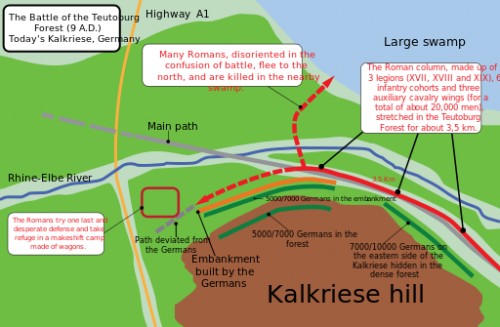
Battle of Teutoburg Forest
Here a more intense battle seems to have taken place as the German warriors led by Arminius went in for the final kill.However, continued archaeological excavations in the area make it likely that our knowledge of how the exact operation played out, will lead to new conclusions. One element, though, is hardly likely to be substantiated. Tacitus reported that one of the reasons why the Germans won the day was that the Roman bowstrings were soaked in rain and hence this weapon was rendered useless.
WEAPONS
Archaeological excavations at the site have uncovered more than 1500 Roman coins and 6000 finds; nearly all of them are fragmented pieces of Roman military equipment like hobnails, pieces of ringmail shirts, belts, aprons, and brooches as well as fragments of auxiliary equipment. It is obvious, too, that the Germanic warriors carefully sifted the remains for anything useful. Thus, only one fragment of a Roman sword blade was found, while numerous scabbards had been discarded after being stripped of metal. This fate was also met by an impressive collection of shields, carefully stripped of bosses and other metal. These acts indicate that the German warriors preferred other types of weapons – their special shields and different swords (the spatha). It is highly likely that the short Roman swords (the gladius hispaniensis ) and their javelins (the pila) found on the battlefield would have been scrapped and the metal reused by Germanic weapon smiths. One special find has become iconic for the battlefield at Kalkriese, the silver face mask of a Roman equestrian officer. Apparently part of the rampart fell upon it and some other gear hiding this from the sight of the post-battle looters and preserving it for us.
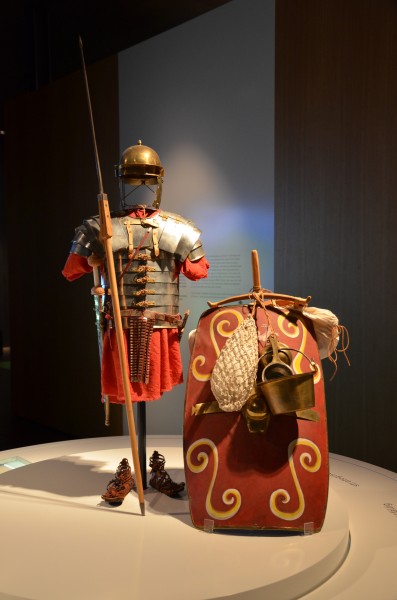
Roman Legionary Kit
AFTERMATH
As later reported by Roman historians, the battle ended in the total annihilation of the Roman soldiers. Varus was said to have fallen on his own sword, while the victors kept the prized eagles of the Roman legions as visible signs of the triumph. Only two of those were ever recovered and that after seven years. The numbers of the legions were never reused in commemoration of the lost legions. No wonder, Suetonius reports to us that Augustus cried out and banged his head against a door when he received news of the defeat:
He suffered but two severe and ignominious defeats, those of Lollius and Varus, both of which were in Germany.Of these, the former was more humiliating than serious, but the latter was almost fatal since three legions were cut to pieces with their general, his lieutenants, and all the auxiliaries. When the news of this came, he ordered that watch be kept by night throughout the city, to prevent the outbreak, and prolonged the terms of the governors of the provinces, that the allies might be held to their allegiance by experienced men with whom they were acquainted. He also vowed great games to Jupiter Optimus Maximus, in case the condition of the commonwealth should improve, a thing which had been done in the Cimbric and Marsic wars. In fact, they say that he was so greatly affected that for several months in succession he cut neither his beard nor his hair, and sometimes he would dash his head against a door, crying: "Quintilius Varus, give me back my legions!" And he observed the day of the disaster each year as one of sorrow and mourning. ( The Lives of the Twelve Caesars - Augustus, 23.1-3)
Five years later, the Roman Senate appointed Germanicus commander of the forces in Germania Interior. This led to a campaign 14 -16 EC during which he succeeded in meting out a terrible revenge on the Germans, seriously routing the army of Arminius and regaining two of the three lost eagles. He also achieved some sort of healing of the trauma by securing the burial of the Roman soldiers, whose corpses had been left to rot on the battlefield. Tacitus writes that when the Roman commander, Germanicus, visited the place of battle, he commanded the physical remains of the soldiers should be collected and buried in pits. Archaeologists have shown that the bones and skulls found in these pits had been lying around uncovered for several years. This fits well with this report. However, Germanicus was not able to convert these victories into a lasting domination of the region.
A DECISIVE BATTLE?
In the 19th and 20th century CE historians generally believed that the Battle of Teutoburg Forest was decisive for the future history of Europe. At the battle, the Romans were dealt a terrible blow, after which they were forcefully driven back across the Rhine. Although the regions on both sides of this river operated as one frontier region, the military border kept the Romans on one side and the Germans on the other, until the Franks under Clovis effectively came to rule all the way to the Elbe.

Kalkriese Face Mask
Later historians have of course questioned this. In their opinion, it was, from an economic point of view, not advantageous to subjugate what was basically a rural hinterland of no particular interest. It was simply better to establish sensible and safe trading relations with the Germania interior rather than to invest money and men including formally these former provinces into a now sprawling empire reaching all the way to Hadrian 's Wall. The border along the Rhine was simply easier and thus also cheaper to defend in depth. Also, it served as a powerful magnet for men from the Germania interior wishing to be recruited into the Roman army. It is probable that the only reason the battle at Teutoburg was remembered so vividly had to do with the fact that it was such a devastating and humbling defeat that it hit the public military reputation of the Romans so hard. If you rule and manage by terror, a devastating defeat at the hands of an enemy may well cost you dearly, when you turn to confront the next rebel down the line.
AN ICONIC BATTLE?
However, the aura of the Battle at Teutoburg had a second life after the Reformation in the 16th century CE, when the works of Tacitus came to inspire the Germans seeking liberation from the Catholic church to use Arminius (aka Hermann, as he was now called) as the champion of the people par excellence. Later this idea took off when he was turned into the champion of the German people against the Varus of all times, Napoleon. As the Romantics envisioned it through paintings, poetry, and plays, General Blücher was simply Arminius reborn, while Napoleon was the Roman general routed at Waterloo. At this point, Germans began to plan for a serious monument, the Hermann monument near Detmold (where the battle at that time was believed to have taken place). Nevertheless, it was not until 1875 CE the Hermanns Denkmal was erected: 57.4 meters high the monument continues to raise its sword pointing westward. Measuring seven meters and 600 kg this was donated by the Krupp company. Today, it reminds us of the meticulous metallic scavenging, which went on at Kalkriese in September 9 CE.Following upon the astounding victory in 1871 the German elite thought more of it as a sign of what the inscription said: "German Unity under my Strength" ( Deutsche Einigkeit Meine Staerke ). On his head, Hermann carries a winged helmet, and at his foot lies a crushed Roman Eagle. The portrait of Hermann was forged out of metal scrapped from a French canon and melted into the portrait of the newly created German Emperor.
Paradoxically enough, though, this German veneration of Arminius as a national symbol of German unity, nevertheless, carried with it the seed of the ultimate destruction of the German army in WW2.
During the Middle Ages, most warfare consisted of an endless series of sieges followed by looting and occasional harrowing of the countryside. Pitched battles were occasionally fought, but in general kings and their military leaders sought to avoid them;costly and potentially devastating, most generals feared them. This changed fundamentally in the late 18th century CE when Napoleon entered the scene bolstering the idea that glory could indeed be won – and hence should be sought – in the magnificent set-piece battles, which he excelled in. As the Germans sought unity by waging war (1864 - 1871 CE) on their neighbours, Denmark, Austria and France, a gifted military leader, Helmuth von Moltke the Elder came forward. Inspired by the Clausewitz (general and war theoretician), Moltke succeeded in both laying down the rulebook for how to wage war in the 19th century CE and win an impressive number of decisive battles in the manner of the greatest German hero of them all, Arminius.
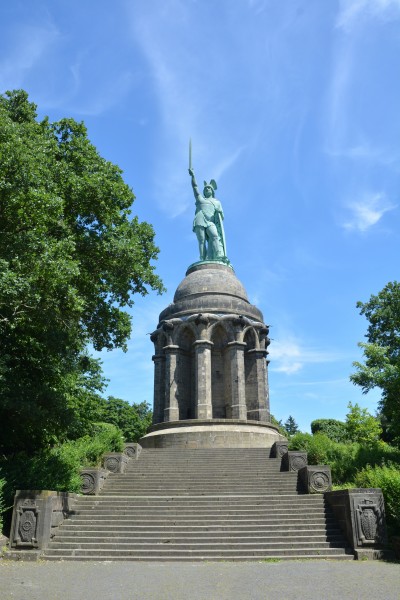
Statue of Arminius
Thus, even though history is witness to the fact that wars, in the end, are won by attrition and only very seldom in decisive battles, the gifted German generals in WW2 were challenged by the allure of battle. Of course, they might in this context be accused. On one hand they felt they had to follow orders from a military incompetent; on the other hand they rightly knew that any war which did not gain glories in the battlefield, could not be won by German forces, which in the long run would lack the essential manpower and resources to accomplish it by exerting suffering. In such a situation, it is understandable that luring the enemy into decisive battles might carry fruit. This was, therefore, the strategy, which in the end was behind the German decision to push forward into the Ardennes, and engage the Allied at the Battle of the Bulge December 1944 – January 1945 CE; arguably one of the last great battles in world military history.
Lurking behind this was thus the lure of the decisive battle, which the German generals believed their Arminius or Hermann aka Moltke had won in the Teutoburger Forests of yesteryear. Thanks to the archaeologists, we now have to speculate whether, in fact, Arminius did not rather fight his way through as a gifted leader of groups of guerrillas and warbands?
MUSEUMS
An important and very interesting museum is located on the battle site. This is of utmost importance for anyone wishing to understand the events leading up to the battle, how it was enacted and the historical and geographical context. It is a nice museum for children too. Outside the museum, visitors are invited on a tour through the battle site, which gives a fine indication of how it played out for the Roman soldiers and the German warriors
In the German Historical Museum in Berlin, the first exhibition is about the Battle of the Teutoburger Forest. The curators obviously chose the mask carried by a Roman in battle as the starting point of what is fundamentally a very impressive exhibition in three parts catering for the sweeping history of the ups and downs of German unification and divisions inside 2000 years.
LICENSE
Article based on information obtained from these sources:with permission from the Website Ancient History Encyclopedia
Content is available under License Creative Commons: Attribution-NonCommercial-ShareAlike 3.0 Unported. CC-BY-NC-SA License